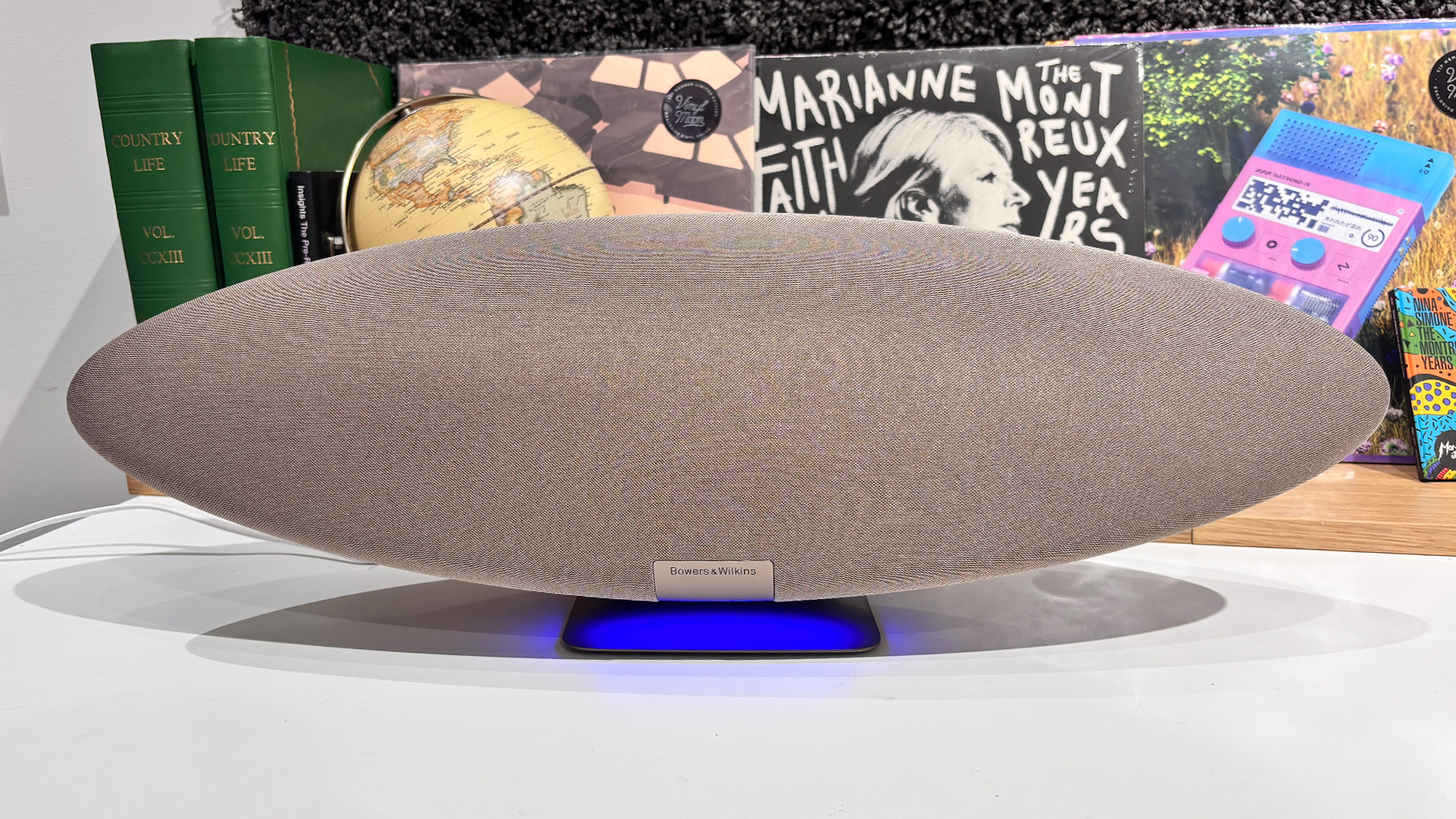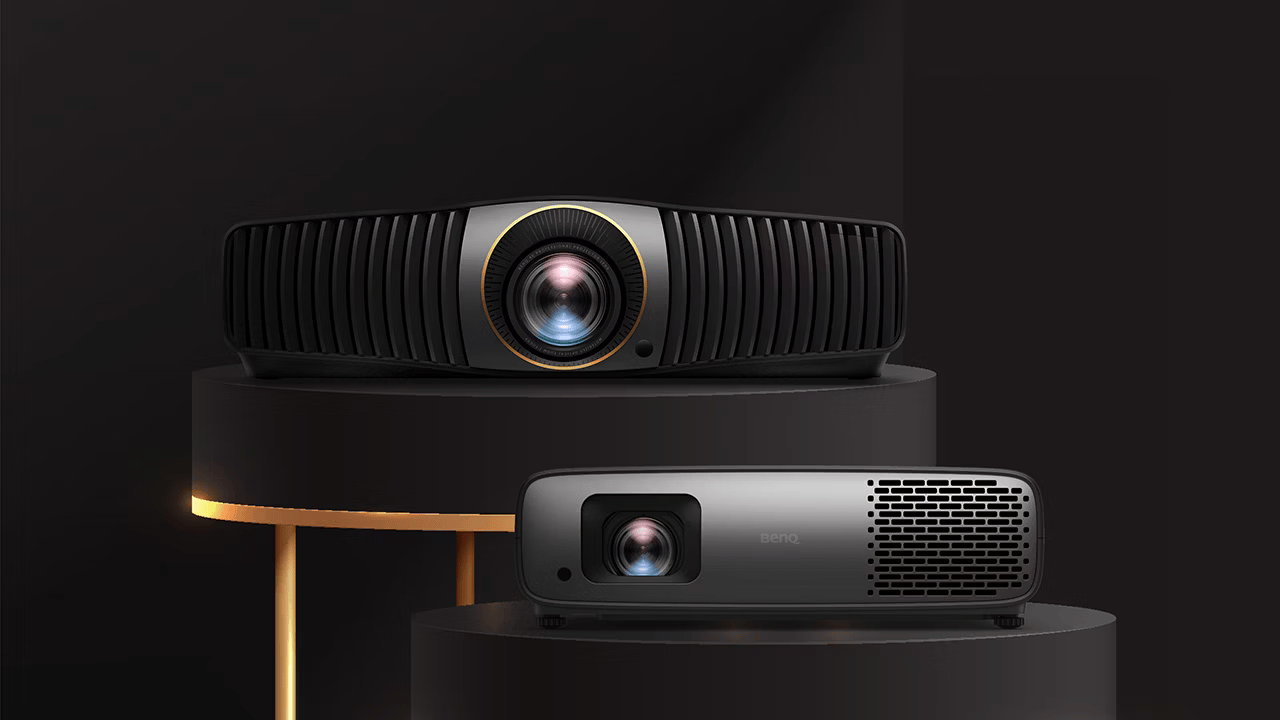What Hi-Fi? Verdict
The B&W Zeppelin Pro Edition blends iconic looks with solid streaming support and a powerful, full-bodied sound to impressive effect. Despite its lack of physical inputs, it’s a winner in our book
Pros
- +
Muscular, full-bodied sound with plenty of detail
- +
Pleasing sense of scale
- +
Excellent build quality
Cons
- -
Sound prioritises clarity and scale over excitement
- -
No physical source inputs
- -
No voice control
Why you can trust What Hi-Fi?
It’s fair to say that the Bowers & Wilkins Zeppelin is a bit of an icon. We’re not necessarily saying it’s the greatest wireless speaker ever created – the 2021 iteration gained a respectable four stars when we tested it – but there’s something about a massive, blimp-shaped unit called the ‘Zeppelin’ which commands your attention. Like the Sony Walkman, the Routemaster Bus or Mario’s blue dungarees, the Zeppelin is a true design classic.
The mini-airship has been going for so long that the original model, which debuted way back in 2006, was designed as a dock for the iPod Classic. Bowers & Wilkins’ most recognisable wireless speaker is never far from a sequel or upgrade, with this Zeppelin Pro Edition using upgraded drivers and improved streaming support to deliver, B&W hopes, a better-sounding spin on 2021’s four-star contender. These aren’t mere tweaks and tinkerings, either – the tweeters used have trickled down from the brand’s current 600 S3 Series of loudspeakers, whereas enhanced cone-damping for the midrange units teases a more open, revealing midrange. These are major changes, so we’re expecting results that reflect a product that’s received more than just a new coat of paint.
It’s been hard to resist the urge to pepper our review with nothing but rock-based wordplay and clumsy references to blimps and airships, so let’s get one out of the way early: it’s time to find out whether the Zeppelin Pro soars majestically or is just full of hot air.
Price
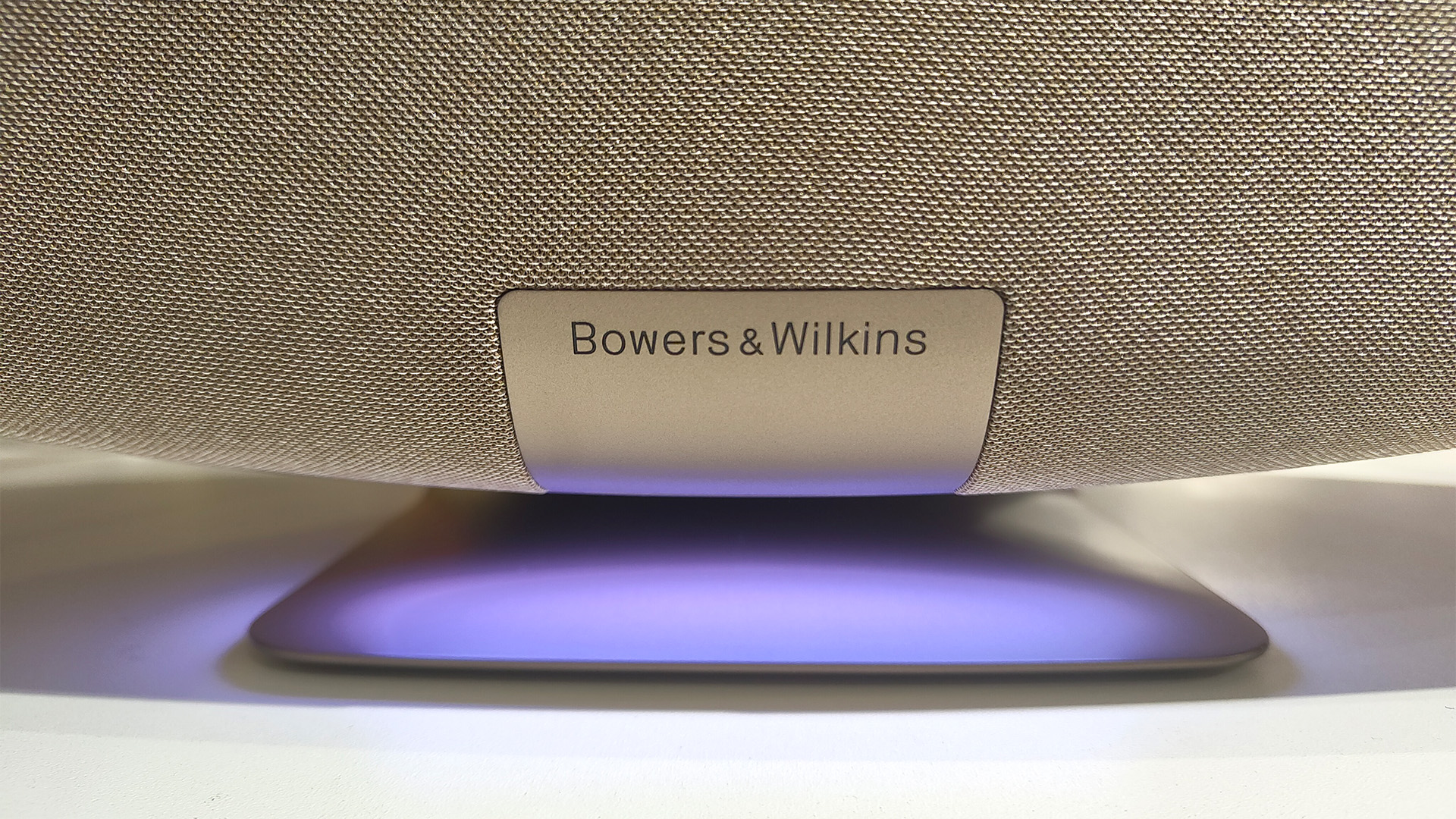
The standard B&W Zeppelin from 2021 launched at £699 / $799 / AU$1199 but has since dropped to around £529 in the UK. This Pro Edition mirrors that same launch price of £699 / $799 (but a little pricier in Australia at AU$1349). Offering the new Pro model at the same launch price as its older stablemate isn’t to be sniffed at, as B&W could easily have whacked up the cost for its newer, upgraded edition.
While there aren’t many rivals around at this level, the Zeppelin Pro has one big hurdle to overcome in the shape of the Award-winning Naim Mu-so Qb 2. If you’re in the UK, the Naim’s price of £699 matches that of the Zeppelin, although it costs a good deal more in the US ($999) or Australia (around AU$1800).
Build & design
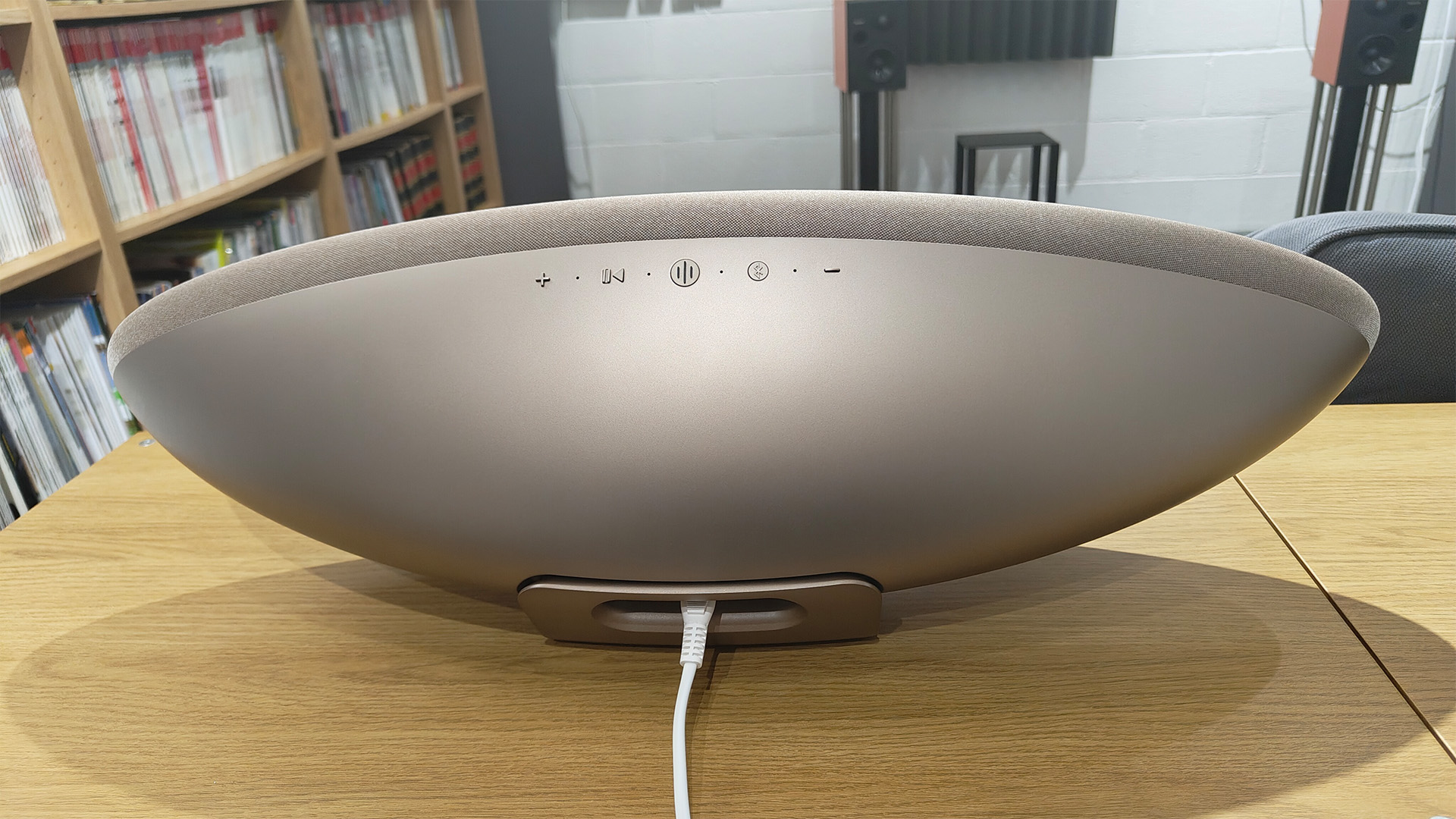
A couple of swanky finishes notwithstanding, this Pro Edition looks practically identical to its 2021 stablemate in terms of its overall shape. That’s no bad thing, as we imagine that a massive part of the appeal for prospective buyers eyeing a Zeppelin for themselves is its striking aesthetic. Like the standard edition, the Zeppelin Pro is unashamedly elliptical when observed face-on, though if you view the speaker from the top or take a long walk to see it from the back, you’ll notice that the rear has more of a wedge-shaped configuration thanks to its sloping plastic casework and horizontal base mounted on a sleek metal pedestal.
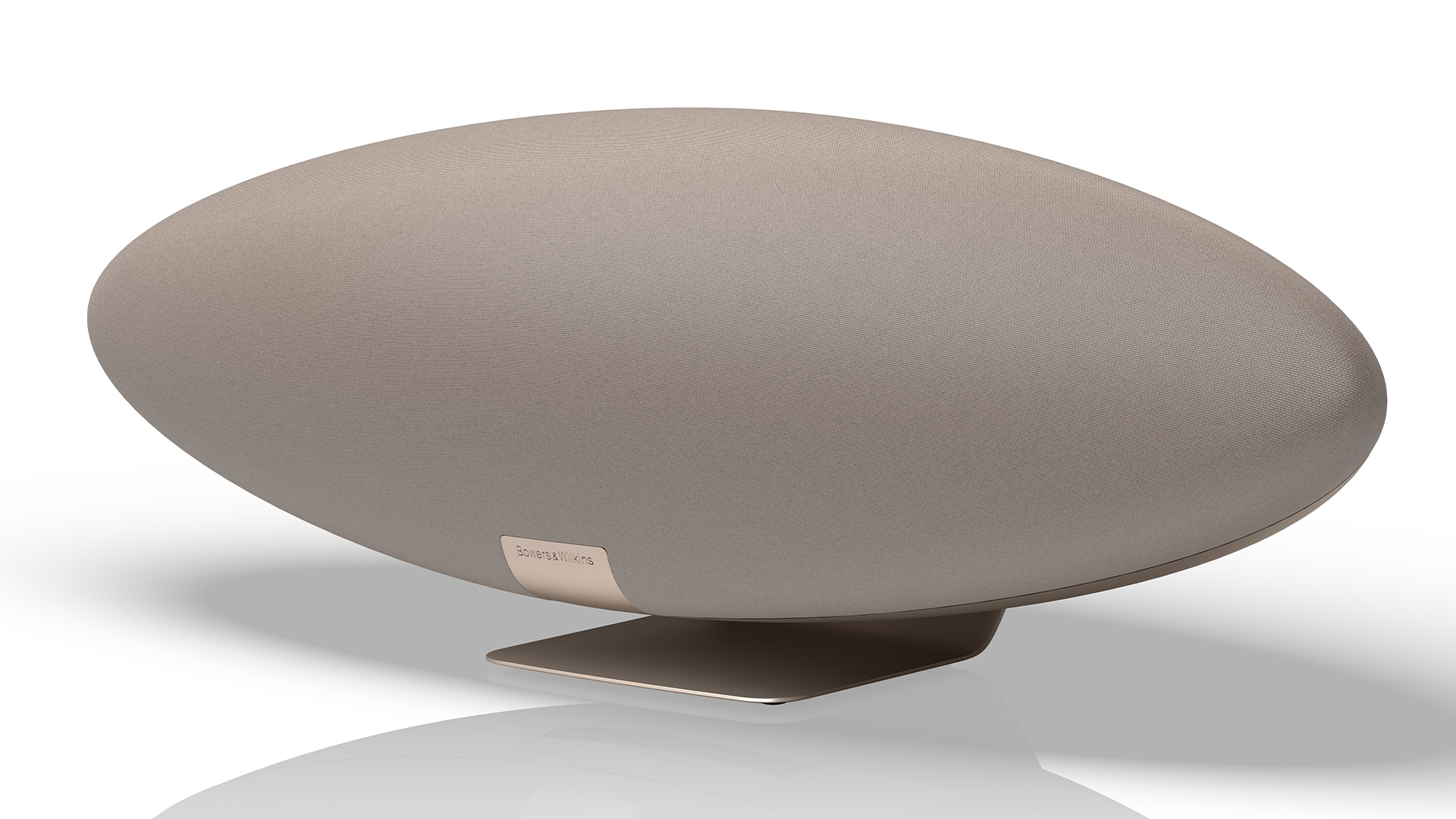
Power 240W
Bluetooth 5.0 (aptX Adaptive, SBC, AAC)
Mains-powered or battery-powered Mains-powered
Battery life N/A
Features Spotify Connect, Tidal, Deezer, Qobuz, Amazon Music, AirPlay 2, internet radio
App? Yes
Dimensions (hwd) 21 x 65 x 19.4cm
Weight 6.6kg
Finishes x 2 (Space Grey, Solar Gold)
If you’re planning on getting the Zeppelin Pro for anything other than wireless streaming, this is the part of the review where we burst your bubble. There are no physical audio inputs at the speaker’s rear, aside from a USB-C port for software updates sitting alongside a factory reset button. There’s no optical, no RCA line level, not even a 3.5mm aux input to speak of – the Zeppelin is a wireless speaker through and through. While this may be a dealbreaker for some, we imagine that most users will be happy focusing on the streaming aspect of the Pro Edition rather than its lack of physical inputs – if that isn’t you, there are alternatives such as the Naim Mu-so 2 Qb to fulfil your needs.
There are, however, physical on-unit controls. Along the top of the speaker’s upper rear side, you’ll find a line of buttons for volume and play/pause, as well as a multi-function button and a Bluetooth button. Unlike on the standard Zeppelin, you won’t find a circular symbol for summoning Amazon’s Alexa voice assistant – the new Pro Edition doesn’t have voice control capabilities as there was a lack of customer interest in the feature.
As was the case with the similarly configured 2021 model, the Zeppelin Pro Edition’s controls can be a touch tricky to access if the speaker is mounted in a high place. We can see why B&W has put its buttons around the back to preserve the sleek, unfussy aesthetic of the speaker’s main grille, but it doesn’t necessarily make on-unit handling that easy when you’re looming over the back of the Zeppelin Pro to alter the volume or trying to connect by way of Bluetooth. Controlling the speaker via the provided app is the way to go if you don’t want to see your speaker crashing to the deck like a mini Hindenburg.
The 2021 Zeppelin came in two finishes – dark or light pearl grey – and B&W has upped the ante for the Pro Edition by offering a sleek space grey and a new luxurious solar gold colourway. We opted for the latter with our test unit, and while it may be a touch decadent or showy for some, we find the effect illuminates our listening rooms with a sense of luxurious grandeur – it’s the sort of speaker that wouldn’t look out of place in the boardroom of Linklaters or JP Morgan.
If you really want to impress the senior partners, you can use the Bowers & Wilkins Music App to turn on and customise the dimmable ambient light that shines down onto the pedestal base, once again creating that enticing illusion that your Zeppelin Pro is actually levitating. Some of the lighting’s colour options are a little out there, though, so we’d recommend going with a tasteful cream or white glow if you want to preserve the speaker’s classy aesthetic. Our inner Laurence Llewelyn-Bowen tells us that lime green or pristine gold isn’t necessarily a winning colour combination.
Features
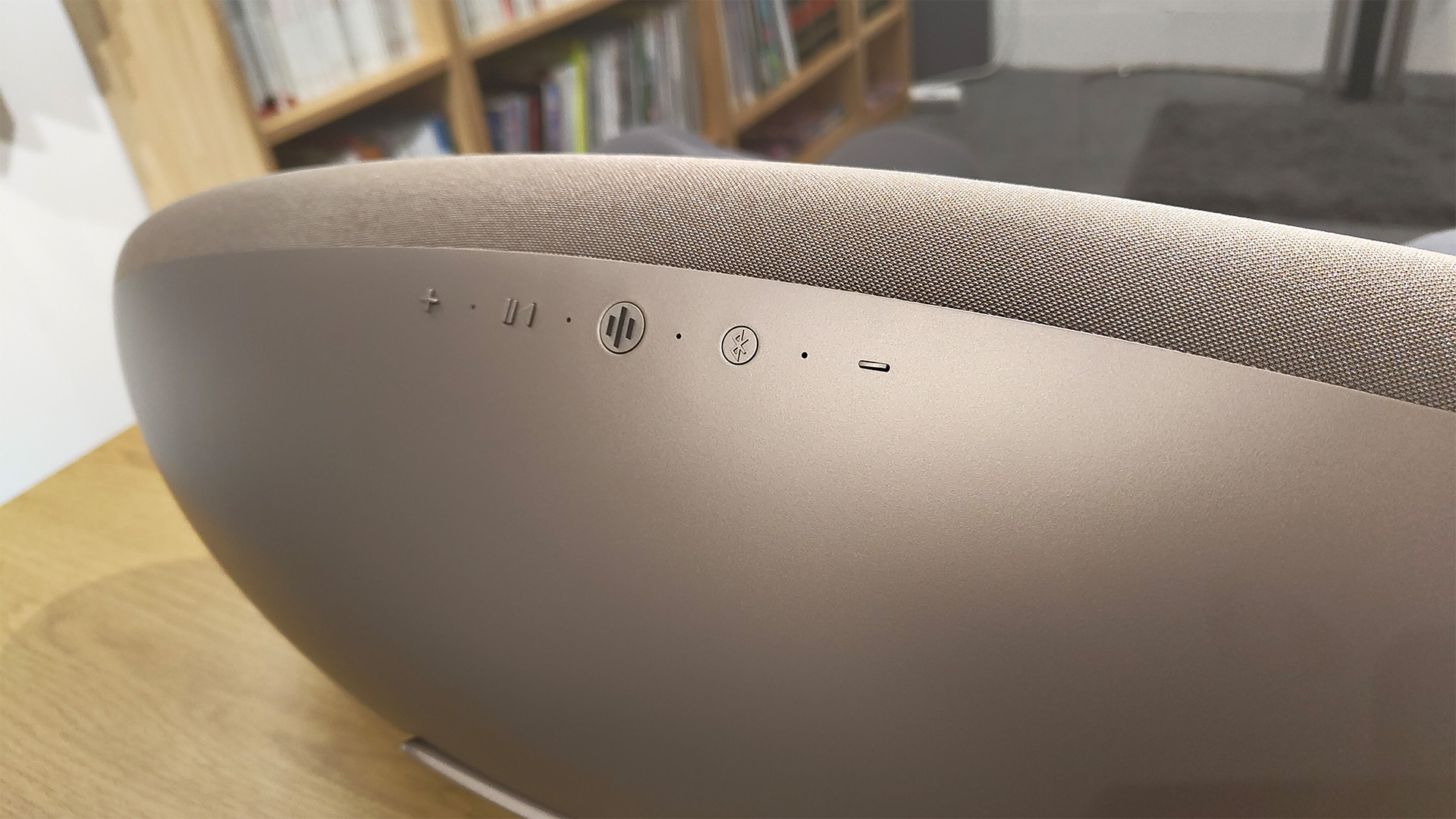
Setting up the Zeppelin Pro is a piece of cake – fire up the app, add the speaker, select your chosen wi-fi network and you’re ready to go. The Bowers & Wilkins platform is a pleasingly comprehensive one, letting you link your chosen streaming services to the app for easy, all-in-one-place access. You can then save and curate various playlists, tracks and radio stations from across your favourite services, or use B&W‘s app to access your songs and artists of choice.
Good as the B&W app may be, we’re still a little miffed to find that the provided equaliser is only two-band, especially when most rival platforms tend to offer somewhere between three and five sliders to choose from. It’s not a dealbreaker, but one treble and one bass slider feel a touch miserly in this age of ever-deepening customisation.
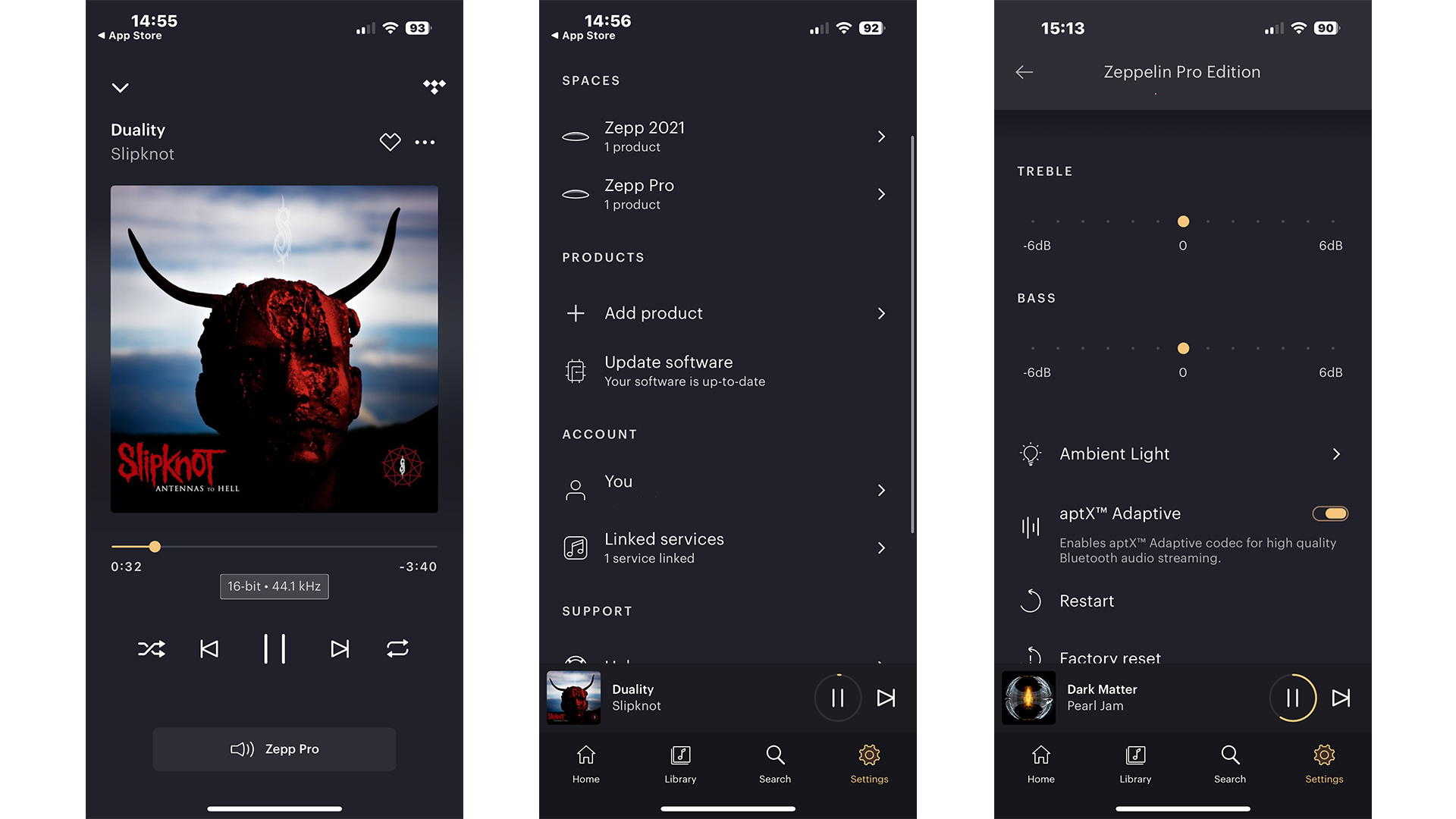
Happily, the number of supported services is extensive. We use Tidal for most of our testing time, but we’re pleased to see the likes of Deezer, Qobuz, Amazon Music and TuneIn internet radio on board, as well as the ever-popular AirPlay 2 and Spotify Connect. There is no Tidal Connect support at the moment, however, nor for Google Chromecast. Alongside its 240 watts of amplification, the new Zeppelin supports high-resolution audio playback up to 24-bit/96kHz thanks to its built-in 24-bit DAC. If you want to hook up to the Zeppelin via Bluetooth, you can do so via Bluetooth 5.0 with support for aptX Adaptive available alongside the standard AAC and SBC codecs.
This latest iteration of B&W’s iconic speaker can be used as part of a multi-room system using the Bowers & Wilkins app which can include the company’s Formation range of wireless speakers. You can also use AirPlay 2 to create a multi-room set-up, although this employs higher latency and lower resolution if you do so. We had to wait for multi-room capabilities to arrive on the 2021 model via a post-launch update, making it gratifying to find it supported straight out of the box this time around.
Sound
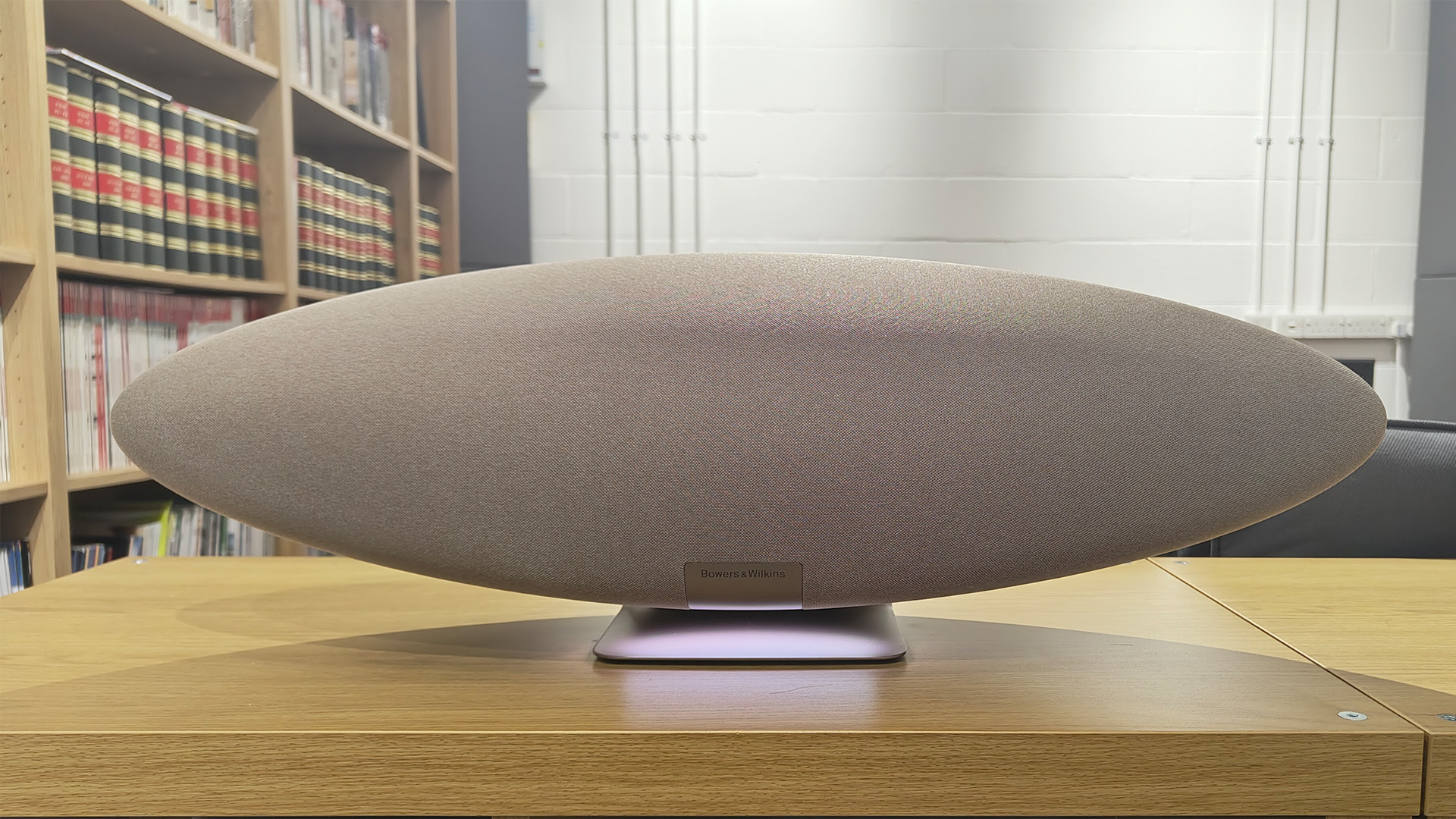
The Zeppelin Pro Edition houses the brand’s latest titanium dome tweeters supported by a set of 9cm midrange drivers harnessing B&W’s 'Fixed Suspension Transducer' (FST) technology. This is the same arrangement found in many of the company's premium floorstanding speakers, which replaces the conventional rubber surround with a special acoustic foam for improved cone resonance control. There’s also a re-engineered 15cm subwoofer which promises “deep, detailed and refined bass”, with the bass driver’s design optimised to prevent cabinet rocking for a more agile performance than that mustered by the older Zeppelin.
We’re keen to see what this speaker is capable of, and there’s only one band that’s appropriate to get our testing started. Firing up Led Zeppelin’s Immigrant Song, we note how the Pro Edition confidently outperforms the 2021 version thanks to its upgraded drive units, breathing a sigh of relief that all of that work has not been in vain. There’s a real full-bodied robustness to the Pro which goes beyond that of which the original version is capable, making tracks sound authoritative, imposing and anchored with serious weight in the lower end. We note with glee the added helping of clarity, too, with Robert Plant’s howling screech brought through with greater authenticity and verve than our 2021 comparison model can manage.
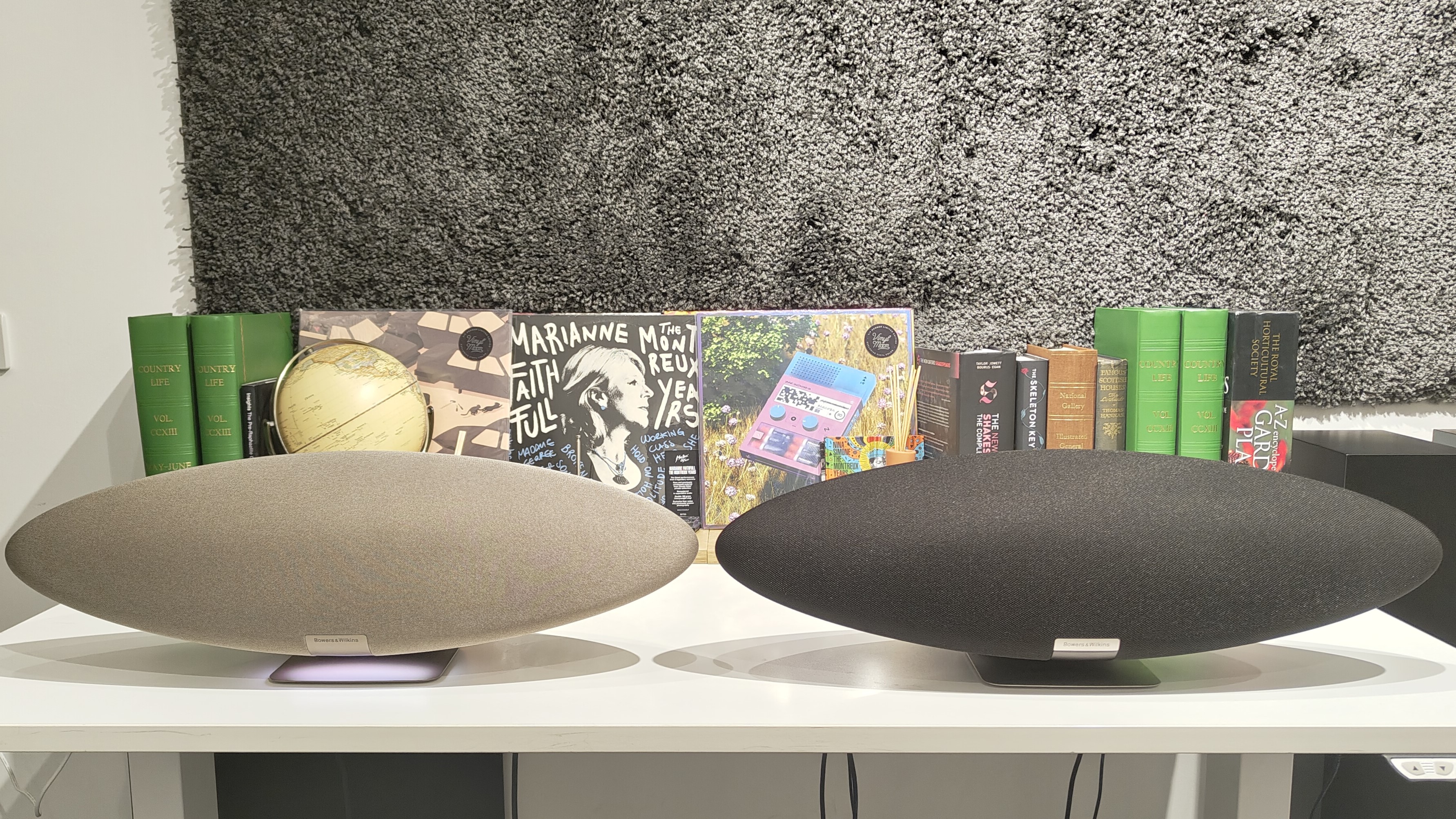
The Pro Edition continues to demonstrate that the Zeppelin line’s iconic shape is more than a mere gimmick, with one of the benefits of that wide form being its impressive sonic spread – sit in front of the speaker with Radiohead’s Burn The Witch playing and you’ll be able to discern how different instruments and tones are placed convincingly across the soundscape, with flittering hi-hats appearing over to the left before panic-inducing guitars leap in from the right. The overall sound is broad and enveloping, mushrooming out across our test room with the weight and scale of a speaker that comes across as measured, authoritative and always in control.
There’s detail to be discovered, too. The Pro Edition offers a pleasingly powerful rendition of Waxahatchee’s Right Back To It, granting the melodious, laid-back guitar playing ample bite and texture without losing that core feeling of melancholic intimacy. Speakers that go big on power can become heavy-handed with softer offerings, but we don’t feel that the track’s effortless, sun-soaked charms are jettisoned overboard when played through the Zeppelin.
If we had to criticise the Zeppelin Pro, it would be that it doesn’t always bring out tricky rhythmic patterns with quite the same chutzpah as its Naim Mu-so 2 Qb rival. It’s a shortcoming we pick up on when playing Burn The Witch, during which the track’s ever-building strings and incessant drum hits gain a greater feeling of propulsion and eagerness when played through the Naim. The opening tune from A Moon Shaped Pool has aptly been described as a three-minute musical anxiety attack, and thanks to its snappier sense of rhythm, it’s the Naim that’s more likely to have us reaching for the calming lavender spray.
Verdict
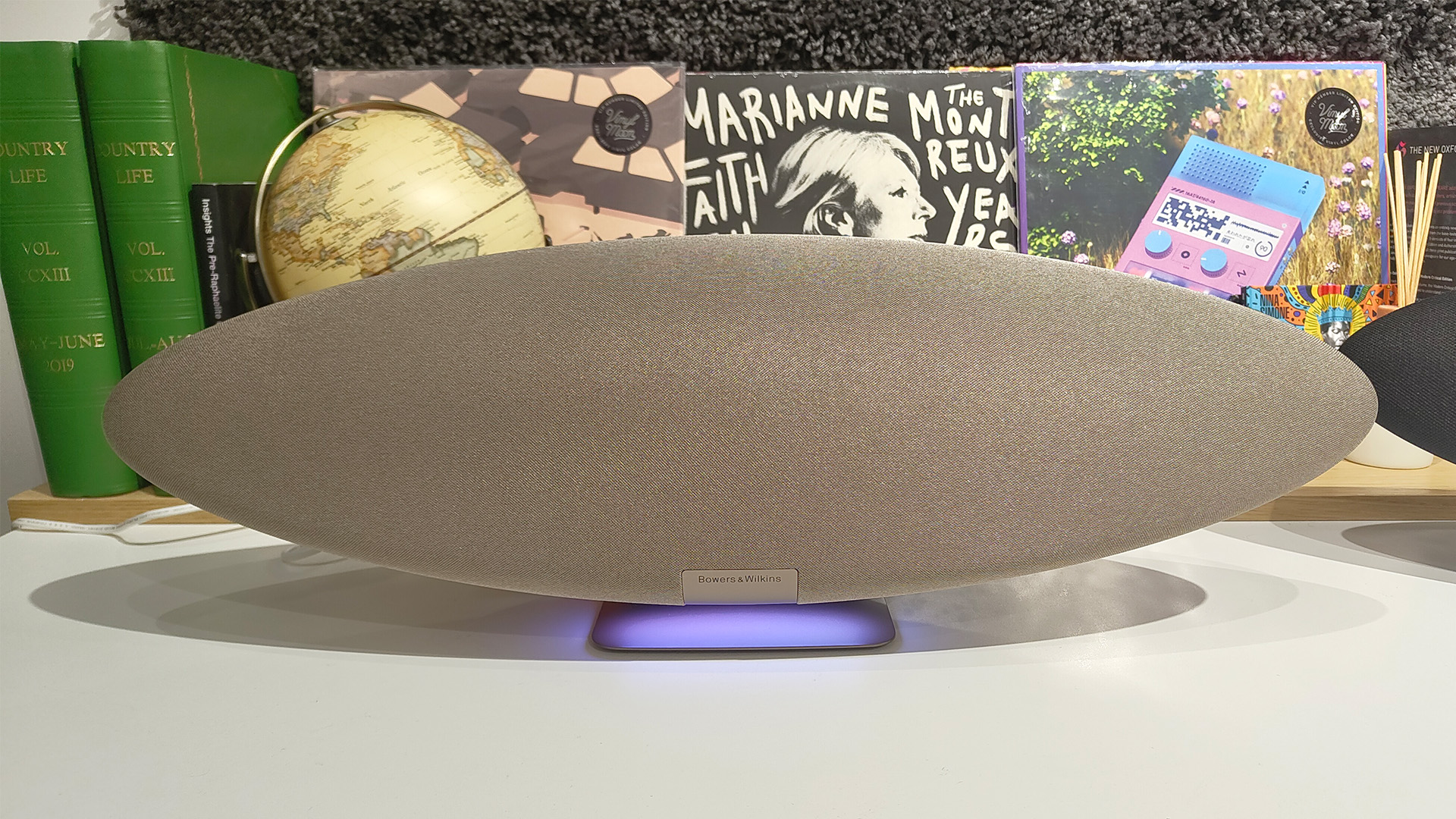
We completely understand the appeal of the B&W Zeppelin Pro Edition – after all, how could you miss it? That design remains as alluring as ever, an effect that’s only amplified by just how great our test model looks when daubed in its Solar Gold finish.
A few holes in its feature set do threaten to let the whole thing down, but the absence of voice control and a lack of physical inputs won’t be catastrophic for most users who simply want a bold, set-up-and-go wireless speaker that will look good and sound better. Powerful, authoritative and sonically superior to the 2021 edition, we’ve got a whole lotta love for this latest addition to the Zeppelin roster.
First reviewed: February 2025
SCORES
- Sound 5
- Features 3
- Build 5
MORE:
Read our review of the Bowers & Wilkins Zeppelin (2021)
Also consider the Naim Mu-so Qb 2
Best wireless speakers tried and tested by our expert team

Harry McKerrell is a senior staff writer at What Hi-Fi?. During his time at the publication, he has written countless news stories alongside features, advice and reviews of products ranging from floorstanding speakers and music streamers to over-ear headphones, wireless earbuds and portable DACs. He has covered launches from hi-fi and consumer tech brands, and major industry events including IFA, High End Munich and, of course, the Bristol Hi-Fi Show. When not at work he can be found playing hockey, practising the piano or trying to pet strangers' dogs.
- Kashfia KabirHi-Fi and Audio Editor
- Ketan BharadiaTechnical Editor
